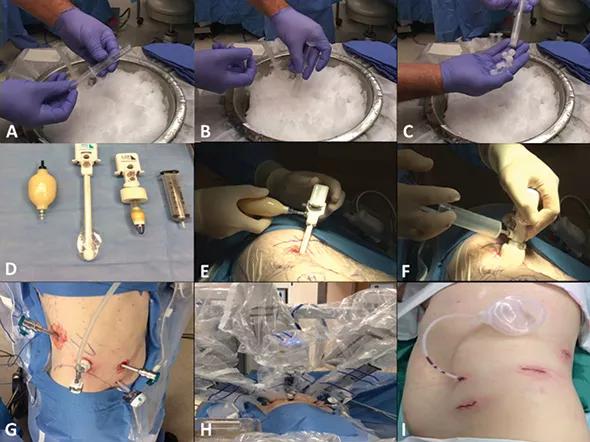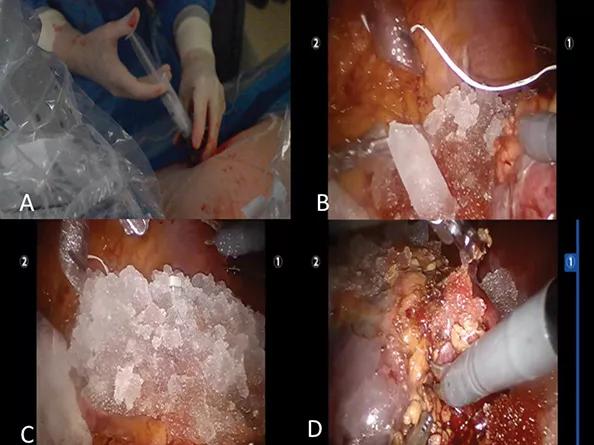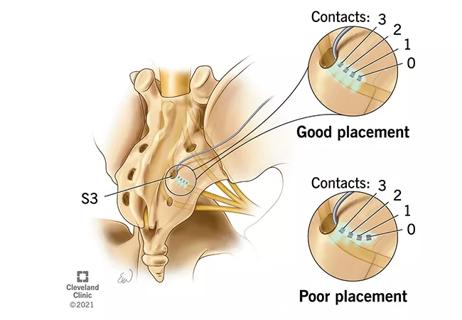Technique may be most useful with prolonged clamp time

By Jihad H. Kaouk, MD; Homayoun Zargar Shostari, MD; and Jayram Krishnan, DO, MBA
Cleveland Clinic is a non-profit academic medical center. Advertising on our site helps support our mission. We do not endorse non-Cleveland Clinic products or services. Policy
An ice slush technique of cooling has been applied to the renal parenchyma during robotic partial nephrectomy (RPN), resulting in long-term preservation of renal parenchymal function.
The application of robotic technology to partial nephrectomy has allowed surgeons to recreate the principles of open surgery via a minimally invasive approach. Even larger deeply infiltrative tumors, or hilar tumors, can be treated with RPN. Excision of such tumors in a bloodless field requires that the renal hilum be clamped as in open surgery. However, prolongation of clamp time in such scenarios may be detrimental to long-term renal parenchymal function.
Renal parenchymal cooling has been used in open partial nephrectomy (OPN) to protect against such detrimental effects. When renal parenchymal temperatures of 5° to 20°C are achieved, renal metabolism is suspended and the nephrons can withstand as much as three hours of ischemia without permanent damage.
Although various techniques have been devised to induce renal hypothermia during minimally invasive nephron-sparing surgery, technical difficulties, lack of reproducibility and lack of proficiency have restricted their utility.
Based on the principle of using “ice slush” as a cooling medium, we have developed an easily reproducible technique to achieve renal hypothermia during RPN. Data from 22 consecutive patients undergoing RPN (transperitoneal or retroperitoneal) in which warm ischemia times of more than 20 minutes were anticipated were collected prospectively in our database. A single surgeon experienced in RPN performed all procedures. Our standardized technique of RPN has been modified to encompass renal hypothermia using intracorporeal ice slush.
After patient positioning and placement of ports, sterile ice slush is created in an ice slush machine and is prefilled in multiple modified syringes for subsequent ice delivery. The ice is delivered via a lateral 12-mm accessary port placed directly above the kidney. The renal parenchymal temperature is measured with a needle temperature thermocouple.
Once the kidney is completely mobilized with Gerota’s fascia and the pedicle is dissected out, the ice is delivered into the abdomen and packed around the kidney. The renal artery and renal vein are sequentially clamped and more ice is introduced. Renal and core body temperatures are monitored during the procedure. More ice slush is introduced and the kidney is allowed to cool further to parenchymal temperatures of 20°C or less. At this point, the ice slush overlying the renal tumor is cleared and the tumor is resected. Renorrhaphy is then performed. The remaining ice is suctioned or placed along with the specimen in the entrapment sac.
Twenty patients were included in our analysis. Median operative time was 220 minutes with median estimated blood loss of 100 cc. The median cold ischemia time was 28 minutes and the median time for introduction of ice slush was seven minutes. The median nadir parenchymal renal temperature was 17° C with minimal median change in core body temperature (0.35°C). Median time to achieve nadir renal hypothermia was eight minutes.
In our initial experience we did not observe any intraoperative complications or an increase in our surgical margin rate. Median short-term (one-month follow up) preservation of estimated glomerular filtration rate was 81 percent. Importantly, we did not observe any delay in return of bowel function beyond two days or any postoperative complications. Our patients’ median length of hospital stay was two days.
From our preliminary study it appears that our technique of intracorporeal renal cooling is safe and reproducible. Short-term renal functional outcomes are promising but longer-term functional outcomes need further assessment.
This technique is likely to have clinical utility in RPN cases involving a large or complex renal mass when prolonged clamp time is anticipated.
Our technique was reproducible for adoption in both retroperitoneal and transperitoneal RPN approaches, essentially replicating cooling during OPN, albeit with a minimally invasive technique.
Dr. Kaouk (kaoukj@ccf.org) is Director of Cleveland Clinic’s Center for Robotic and Image Guided Surgery and is the Glickman Urological & Kidney Institute’s Vice Chair for Surgical Innovations. He is Professor of Surgery at Cleveland Clinic Lerner College of Medicine.
Dr. Zargar Shostari (zargarh@ccf.org) is a Clinical Fellow in the Glickman Urological & Kidney Institute.
Dr. Krishnan (krishnj2@ccf.org) is an Associate Staff Member of the Glickman Urological & Kidney Institute, practicing at Cleveland Clinic Urology, Las Vegas.

Figure 1. (A) 20-cc syringe is modified by cutting off the nozzle ends of the barrels and removing the rubber seal on the end of each plunger. (B)The syringe is filled by successive insertions into an ice slush container. (C) Ice slush is delivered by pushing the plunger. (D) Left to right: Inflation pump, balloon dissector, 12-mm blunt tip trocar, inflating syringe (E) and (F) Balloon inflation with inflation pump and syringe, respectively (G) Port placement for intracorporeal hypothermia during retroperitoneal robotic partial nephrectomy using renal ice slush. The 12-mm camera port is placed at the tip of the 12th rib. The robotic port is placed along the posterior axillary line slightly cephalad to the camera port. Along the anterior axillary line, the robotic port is placed at the level of the balloon port and the assistant’s 12-mm port is placed four finger-widths below the robotic port. (H) The robot is docked directly over the head of the patient, parallel to the spine. (I) Postoperative view of the port sites.

Figure 2. (A) Ice delivery via our accessory port. (B) Intracorporeal view of ice being deposited around the kidney. The needle thermocouple can be seen inserted into renal parenchyma. (C) Kidney covered by ice prior to tumor resection. (D) Tumor resection after pedicle clamping.

Review the advantages and disadvantages of newer interventions

Pioneering and refining the approach in pyeloplasty, nephrectomy and more

Unlike earlier pills, new drugs do not cause liver toxicity

Male factors play a role in about half of all infertility cases, yet men often are not evaluated

Hadley Wood, MD, shares her vision as the new editor-in-chief of Urology

Study leverages data from the ROSETTA trial

More on the procedure and the institutional experience

Explain some, but not all, of lower utilization